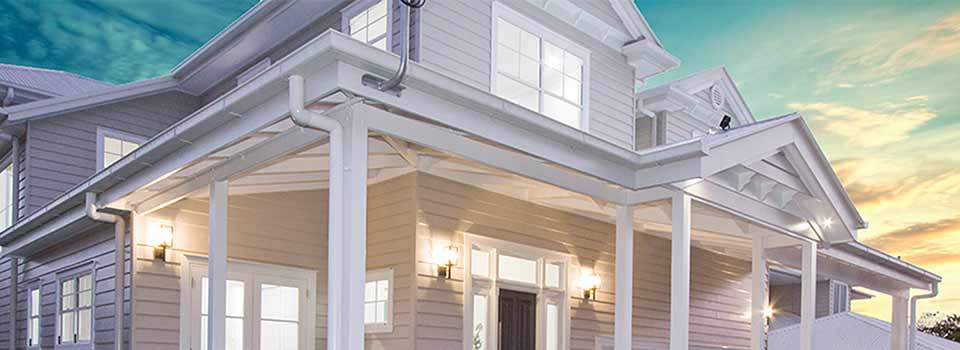The Anatomy of a Residential Roof
There are many different parts that go into a typical home roof—far more than the average homeowner may appreciate. This isn’t a knock on those homeowners—roofs are complicated animals, and there’s no reason an average homeowner should know the ins and outs of them any more than they would know the ins and outs of their car engine. Still, it doesn’t hurt to have a better than average understanding of your home, so we’ve put together a post on all the roof parts that go into a typical home. We’ll cover each one in detail, but for the more impatient among us, here is a quick list;
- Attic space
- Roof structure
- Decking or sheathing
- Underlay membrane
- Eaves membrane
- Roof edge
- Drip edge
- Flashing
- Roof vents
- Plumbing vents
- Shingles or tiles
- Ridge
- Valley
So, now that you have a nice long list of all the different roof parts in your home keep reading to find out what all those parts are, and what purpose they serve.
Attic Space
Most people will be familiar with this one. Attic space is the space underneath the roof but above the main insulation layer. For many people, it is the place where they stash old boxes and things they should probably have thrown away. The attic needs to be ventilated to regulate temperature and keep moisture at bay.
It is possible to convert an attic into a livable space, however doing so means undoing the qualities we just mentioned—ventilation. In these cases, other methods will need to be employed, such as intentional roof void between the inner walls of the converted attic and the outer walls of the roof.
Roof Structure/Framing
The roof structure is the framework on which the more visible parts of your roof are built. For residential properties, this will almost certainly be made from wood, though other materials may be used in rare cases.
The frame will consist of rafters and soffits that support the upper structure of the house and provide a base for the rest of the roof to attach to. If you ever climb into an unconverted attic, you will be able to see the framing all around you. For a large gable roof, it can be a little like looking out from inside a giant wooden ribcage.
Decking or Sheathing
The decking, often made of wood, is essentially a nailbed for the tiles or shingles that will be laid on top. It does not serve any larger structural purpose (though it will add some strength to the build), but it is essential for reinforcing the spaces between the rafters so that the roof does not sag in those areas.
It is because of the potential for sagging and general weakness between the rafters that roof decking is important even for buildings that are going to use larger panels, such as corrugated metal, though it may be left out of some commercial or industrial builds.
Underlay Membrane
Underlay membrane is a layer of material that sits between the shingles or tiles and the roof decking, doing double duty in both protecting the decking from the weather, and protecting the shingles from any resin that might be released by the wood using in the decking.
Underlay membrane is something can easily be overlooked on smaller DIY builds, such as lean-tos or sheds, but it is an essential part of a roof, but for the long term health of the structure, and for ensuring that the roof adequately carries out its role of keeping the elements where they belong; on the outside of the building.
Roof Edge
Also known as the roof fascia, the roof edge is the name for the boards that run along the edge of the roof, or eaves. In addition to providing a neat finish to the junction where the roof meets the outer walls of the house, the roof edge also provides extra protection for that junction from rainwater, wind, and snow.
That being said, this extra protection is incidental, as the fascia is largely a cosmetic addition. The bulk of the work of protecting the edges from the weather is left to the shingles, membranes, and flashing.
Eaves Membrane
Eaves membrane, like underlay membrane, is a special material that is designed to go under the shingles to protect against the elements. However, there is a specific kind of problem that eaves membranes tackle, and that is ice damming.
Ice damming occurs when the heat inside an attic is enough to melt any snow that is resting on the high parts of the roof. The resulting water then runs down the roof where it loses that extra heat and, by the time it reaches the eaves, re-freezes. This creates a dam around the edge of the roof where water can back up, which in turn can result in water seeping in under the shingles, as they are only designed to keep water out that is running downhill.
Eaves membranes provide an extra layer of protection against any water that might be backing up due to ice damming.
Drip edge
We mentioned above that roof edge isn’t really there to keep the water out—it helps with that, but that’s not its purpose. It is the purpose of drip edge, however. This is a type of flashing that is attached around the edges of the roof and acts as an overhang that any water running over the edge of the roof will follow. This keeps said water away from the building—including the roof edge—so it can’t stain or damage the outside of the building, or seep into the property itself.
Flashing
Flashing is the material used around the joints and junctions of a roof to ensure the roof is adequately sealed against the weather. Large sections of a roof will usually form one continuous panel; however, there will invariably be areas where one of these continuous surfaces meets a junction of some kind. It might be the border where the roof meets a chimney or wall, or it could even be the border where one section of the roof meets another section of roof that is framed in a different plane.
These junctions represent a weakness in the roof as far as weatherproofing goes, but flashing covers over these weaknesses, ensuring water cannot get in.
Roof Vents
Roof vents are essential in making sure the temperature and airflow in an attic is properly regulated. Vents can come in a variety of styles, from passive soffit vents to powered turbine vents. The basic purpose is always the same, however. Expel the warm, moist air in the attic while pulling in fresher air to replace it.
Vents also represent another area where flashing would be necessary, as the point in a roof where the vent sticks up is a weakness as far as waterproofing goes.
Plumbing Vents
Plumbing vents are vents that allow air movement in the waste system of a home, whether it be connected to a sewer or part of a local septic tank-based system. As you would hope, the waste system going from your toilets is mostly sealed. However, it can’t be completely sealed because this could lead to air locking and potential blockages.
Unfortunately, given the nature of what is being transported through those pipes, having a vent at ground level is not a particularly desirable solution. Plumbing vents allow air movement in the waste system while ensuring that any unpleasant odours that escape the vent do so well above the level where anyone might be affected by them.
Shingles or Tiles
Shingles or tiles are the finishing touches on a roof. They are the visible aspect that you can see, and so are often designed to look aesthetically appealing. That being said, they perform a crucial function in being the first line of defence against the weather. Tiles and shingles are not the only solutions for these roof parts, but they are by far the most commonly used in residential properties. They consist of a series of overlapping pieces from the top of the roof to the bottom, ensuring that water runs from tile to tile, rather than getting under the tiles where it might be able to leak into the building.
Roof Ridge
A roof ridge is a peak where two pitched roof sections meet, like the top of a triangle. This area is another weak spot as far as waterproofing goes, which is why special ridge cap shingles are used to protect it. On smaller, budget builds, it is not uncommon to use regular flashing to protect the ridge.
Roof Valley
As you might have guessed from the name, a roof valley is essentially the opposite of a roof ridge. This where the junction of two roof sections forms a valley, rather than a peak, which in turn creates a spot that is not only more susceptible to water ingress, but also a spot where water will accumulate since it will have all of the water running down from both sections of the roof. Again, flashing is used to protect this weakness from water ingress.




